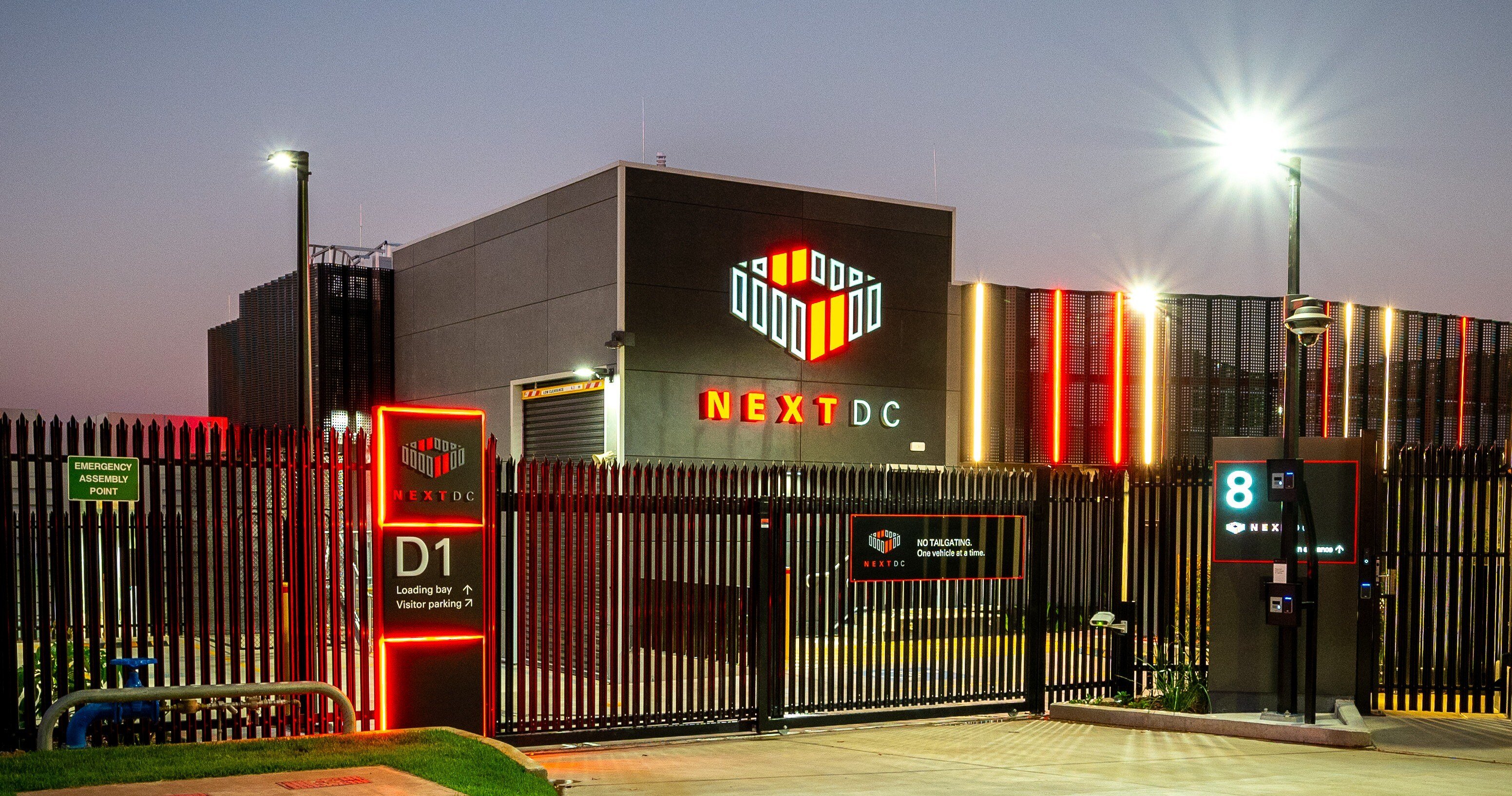Building an AI Ready Infrastructure for Your Organisation: A Strategic Guide for IT Leaders
Introduction
In the rapidly evolving landscape of technology, one certainty stands out: AI is poised to become an integral component of organisational data strategies. For networking and IT leaders, the pressing task at hand is to proactively prepare their IT infrastructures and teams for the impending changes.
As organisations delve into building and deploying applications infused with AI, a pivotal question emerges: What will be the impact on the demand for computing power and other essential resources? In this concise exploration, we unravel the intricacies of this paradigm shift, offering insights into the evolving landscape of AI and its implications for IT infrastructures. Join us as we navigate the challenges and opportunities, providing a roadmap for IT leaders to navigate the transformative journey towards integrating AI seamlessly into their digital infrastructure strategy.Exploring the Frontiers: Key Trends in Emerging AI Applications
In the dynamic field of generative AI and its related applications, numerous emerging domains show considerable potential in the near future. Organisations are increasingly embracing AI and machine learning technologies, incorporating diverse data types, including structured, unstructured, and semi-structured data, across various organisations and industries.
The following represent trends in new AI applications:
- Generative AI: Creating new data, such as images, text, music, or video, with applications in content creation, design, gaming, and virtual reality.
- AI in Natural Language Processing (NLP): Advancements in language understanding, sentiment analysis, and language generation for applications like virtual assistants, language translation, and content creation.
- Edge AI: Deploying AI algorithms directly on edge devices for real-time decision-making, reducing latency, and improving privacy in smartphones, IoT devices, and autonomous vehicles.
- Explainable AI (XAI): AI models transparent and interpretable to humans, addressing the "black box" nature, and building trust in AI systems, particularly in healthcare, finance, and law.
- AI in Robotics and Automation (XAI): Integrating AI with robotics to advance automation capabilities, enabling collaborative robots (cobots) to work alongside humans and enhancing autonomy.
- AI for Cybersecurity: Strengthening cybersecurity measures by using AI algorithms to detect anomalies, identify patterns of malicious activity, and respond to evolving cyber threats in real-time.
- AI in Personalised Medicine: Revolutionising healthcare through the analysis of large-scale patient data, genetic information, and medical records to aid in disease diagnosis, treatment selection, and predicting patient outcomes.
- AI for Climate Change and Sustainability: Exploring AI applications to analyse climate data, optimise energy consumption, predict weather patterns, and develop sustainable solutions to address environmental challenges.
- AI in Finacial Services: Applying AI in algorithmic trading, fraud detection, risk management, and customer service enhancements within the financial sector.
- AI-enhanced Human Resources: Utilising AI for candidate screening, employee engagement analysis, talent management, and data-driven decision-making in human resources.
These trends underscore the expansive scope of AI applications across industries, portraying continual advancements and the transformative impact of AI on diverse facets of our lives and organisations.
Navigating the Impact of AI on Data Infrastructure
As AI technologies continue to advance, addressing the escalating power consumption they entail requires a strategic approach. This includes implementing energy-efficient practices, exploring alternative energy sources, and adopting sustainable designs for data centres. This is imperative because AI applications significantly impact key infrastructure elements such as increased computational demands, network bandwidth requirements, edge computing, enhanced security measures, and increasing power demands.
1. Increased Computational Demands
AI applications, notably deep learning algorithms, necessitate substantial computational power for the extensive processing and analysis of large datasets. This heightened demand underscores the imperative for more potent and efficient hardware within data centres. Processors and accelerators explicitly designed for AI workloads, such as graphics processing units (GPUs) and tensor processing units (TPUs), are already being deployed to fulfil these requirements.
2. Network Bandwidth RequirementsAI systems heavily depend on expansive datasets for training and continual learning. With the increasing complexity of AI models and expanding datasets, there is a heightened demand for high-speed data transfer within data centres and across networks. Addressing this demand involves enhancements to network infrastructure, including higher-capacity switches, routers, fibre optic cables, and internal system interconnects to facilitate efficient data movement.
3. Edge Computing and Distributed AI
The proliferation of AI necessitates real-time and low-latency processing. The strategic implementation of edge computing, where AI computations occur closer to the data source or end-users, becomes pivotal. Decentralising AI processing to edge devices, such as IoT devices or local servers, allows organisations to mitigate latency and bandwidth requirements. Embracing this shift towards edge computing requires the formulation of distributed AI architectures and the seamless integration of AI capabilities into edge devices and networks.
4. Enhanced Security Measures
As AI gains prominence in data centres and at the edge, there is an escalating need for robust security measures. AI can be leveraged to identify and respond to security threats in real-time by scrutinising network traffic for anomalous behaviour and detecting potential cyberattacks. Simultaneously, adversaries may exploit AI techniques for more sophisticated attacks, necessitating the integration of AI-based security mechanisms in data centres and network infrastructure to effectively counter potential threats.
5. Increasing Power Demands
Hyperscale data centres, managing vast amounts of data, demonstrate efficiency in processing but entail substantial power requirements. Global data centre electricity consumption is expected to double by 2026, as reported by the International Energy Agency (IEA). Given the projected growth in AI, exploring energy-efficient practices, alternative energy sources, and sustainable data centre designs is imperative to mitigate the environmental impact of heightened power consumption.
6. Network Optimisation and Automation
Beyond the impacts mentioned above, AI presents opportunities to optimise network performance and efficiency. Machine learning algorithms can scrutinise network traffic patterns, predict potential bottlenecks, and dynamically allocate resources for optimal performance. The integration of AI-driven network automation facilitates self-healing networks, wherein AI systems autonomously detect and resolve network issues, thereby reducing the need for manual intervention and enhancing overall network reliability.
In summary, the ascent of AI will instigate a surge in demand for more robust hardware, increased network bandwidth, and the advancement of edge computing capabilities. Simultaneously, there will be heightened power usage, emphasising the need for energy-efficient practices and sustainable solutions to align with environmental considerations associated with the amplified power consumption linked with AI technologies.
The Role of Colocation Data Centre Fueling AI Infrastructure Needs
As organizations navigate the transformative landscape of AI, the demand for a robust and flexible tech infrastructure becomes increasingly critical. However, for smaller entities with limited resources, establishing a computing backbone that meets both potency and flexibility requirements presents notable challenges.
Colocation benefits businesses of all sizes. Small businesses can obtain the features of a large IT department without a large investment. Medium to larger-sized organizations can expand their data storage capacity without undertaking costly construction or facility leasing. Colocation allows businesses to store equipment in a secure facility with bandwidth, power and a public IP address supplied by the third-party service provider.
Colocation Data Centres as a Solution
Colocation data centres emerge as a compelling solution for organisations pursuing AI excellence. These facilities provide shared, state-of-the-art infrastructure, enabling organisations to leverage high-powered computing and storage capabilities without extensive in-house resources.
Advantages of Colocating Your AI Servers
Scalability:
Colocation enables organizations to scale their infrastructure without the need for significant capital expenditures. In the event of sudden company growth, your IT infrastructure can expand to support it with a substantially smaller investment. This flexibility is particularly vital for demanding applications such as high-performance computing (HPC), artificial intelligence/machine learning (AI/ML), and mission-critical tasks.
Power:
As artificial intelligence (AI) applications advance, specialised hardware tailored for tasks like machine learning and data analytics is increasingly vital. These specialised chips and servers require power-dense racks, with some demanding up to 100 kW per unit. Energy efficiency becomes crucial, prompting the development of more efficient power and cooling solutions. Colocation data centre providers are adapting by offering high-density racks and innovative power solutions to meet evolving demands in a sustainable manner.Cooling Management:
Insufficient cooling undermines performance in data centres. Colocation facilities are equipped with state-of-the-art cooling systems, crucial for AI applications, especially those relying on GPU and TPU resources with significant heat output. These cooling resources ensure that AI systems operate at peak efficiency, mitigating the risk of damaged hardware or system downtime due to overheating.Cloud Onramps:
Enhanced connectivity provided by carrier-neutral colocation data centers, including access to various internet service providers and cloud platforms, is particularly advantageous for AI applications. These colocation facilities offer diverse connectivity options and cloud onramps, enabling efficient data access and analysis. Through cross-connections and hybrid/multi-cloud setups, organizations can optimize their AI workloads for improved speed and functionality. This ensures rapid processing of data, leading to quicker insights and more effective decision-making. Ultimately, the robust connectivity options offered by colocation data centers, coupled with cloud onramps, empower organizations to maximize the performance and efficiency of their AI systems.Empowering Growth:
In the realm of AI, where computational demands and data storage requirements are constantly evolving, colocation data centres offer a strategic solution for scaling infrastructure. By leveraging colocation services, businesses can efficiently expand their AI operations without the need to invest in additional equipment or build new facilities. The cost-sharing model of colocation allows organisations to access the resources they need to support AI workloads while minimizing financial overhead. This enables seamless scalability, ensuring that AI systems can adapt to increasing computational and storage needs without constraints, ultimately facilitating the accelerated growth of AI initiatives.Geographic Location:
The geographic location plays a pivotal role in AI implementation, influenced by factors such as data sovereignty laws, latency requirements, and proximity to data sources. Compliance regulations often dictate where data can be stored and processed, underscoring the significance of selecting the right location for AI infrastructure to ensure legal adherence. Furthermore, minimizing latency is crucial for real-time applications like autonomous vehicles or financial trading algorithms, necessitating the positioning of AI processing closer to the point of data generation or consumption. Additionally, geographic location affects access to skilled talent, available resources, and environmental considerations, all of which impact the effectiveness and efficiency of AI implementations. Colocation providers with a nationwide portfolio of data centers play a vital role in this scenario, facilitating the placement of data and compute resources near end-users, enabling low-latency performance critical for both current AI applications and emerging 5G technologies.Reliability and Uptime:
Maintaining uninterrupted uptime is critical for AI operations, where even brief disruptions can have significant consequences. Downtime hampers real-time data analysis, autonomous decision-making, and continuous model training, hindering system improvement. To address this, organizations invest in resilient infrastructure and proactive monitoring to prevent downtime. Colocation data centers play a crucial role in ensuring reliability by offering redundant power systems, backup generators, and robust Service Level Agreements (SLAs) that guarantee high uptime levels. These facilities are designed to withstand unexpected disruptions, safeguarding data and enabling organisations to harness AI's transformative potential for innovation and progress. Independent certifications, such as from the Uptime Institute, validate this commitment.Sustainability:
Sustainability is increasingly a concern for businesses, particularly in the context of AI infrastructure. Colocation data centers offer a compelling solution to this challenge. By consolidating resources and leveraging economies of scale, colocation providers can significantly reduce the environmental footprint associated with data processing. Moreover, many providers have transitioned to renewable energy sources to power their facilities, further enhancing their sustainability credentials. This shift towards greener infrastructure aligns with the growing emphasis on corporate social responsibility and environmental stewardship. By choosing colocation, organisations can not only meet their data processing needs but also contribute to a more sustainable future.In conclusion, colocation data centres play a pivotal role in fuelling the infrastructure needs of organisations embarking on AI initiatives. These facilities offer a scalable, resilient, and sustainable solution for housing AI servers, enabling businesses of all sizes to access high-powered computing and storage capabilities without extensive in-house resources. With benefits including scalability, power efficiency, effective cooling management, and enhanced connectivity through cloud on-ramps, colocation empowers organisations to seamlessly expand their AI operations and optimise performance while mitigating downtime risks. By leveraging colocation services, businesses can navigate the evolving landscape of AI with confidence, unlocking the transformative potential of AI for innovation and progress.
Elevate Your AI Solutions to New Heights with NEXTDC
Embracing AI's transformative power is a strategic imperative. Partnering with NEXTDC isn't just a choice; it's an investment in AI excellence, empowering organisations to chart a path toward unprecedented success in the era of digital transformation.
Our cutting-edge solutions offer unparalleled computational power, sustainable solutions, scalability, and security, eliminating the complexities of managing infrastructure.
Why Choose NEXTDC for Your Data Centre Needs?
Dynamic Partner Ecosystem:
Leverage Australia's most extensive partner ecosystem with a community of 750+ partners to enable more connections with carriers, cloud providers, and IT service providers.
Hybrid Cloud Experience:
Empowering customers to leverage cloud first strategies and optimise multi-cloud deployments to scale mission critical IT infrastructure.
AI, High-Performance Computing and Edge Design:
NEXTDC is at the forefront of supporting Edge computing and High-Performance Compute (HPC) requirements, providing customised solutions to accelerate your AI journey.
100% Uptime:
The only data centre operator in the southern hemisphere with Tier IV Gold certification for Operational Sustainability, NEXTDC guarantees zero downtime for reliability and performance.
Data Centre Interconnectivity:
Secure, private, and direct access to Australia’s most connected range of global cloud providers, integrated with a nationwide network of data centre facilities.
World Class Design and Operations:
Internationally recognised for designing, constructing, and operating Australia’s market leading Tier IV facilities, certified by globally renowned Uptime Institute.
Sustainability Driven:
Demonstrating a commitment to sustainability, NEXTDC prioritizes renewable energy sources, achieving leading standards such as 5-star NABERS energy efficiency ratings and TRUE certification.
DTA Certification for Government Agencies:
NEXTDC is certified by Australia’s Digital Transformation Agency (DTA), to ensure compliant and sovereign critical infrastructure choice for government at all levels.
Industry Recognition:
NEXTDC, a listed company on the ASX 100, stands out with industry peer awards as the region's most innovative and customer focused data centre provider.
Carbon Neutral Operations:
NEXTDC's corporate operations are certified carbon neutral under the Australian Government’s Climate Active Carbon Neutral Standard.
Efficiency and Cost Management:
Engineered for outstanding energy efficiency, NEXTDC data centres deliver industry-leading benchmarks for minimising operational cost and total cost of ownership.



